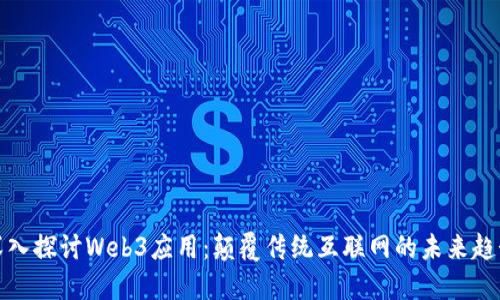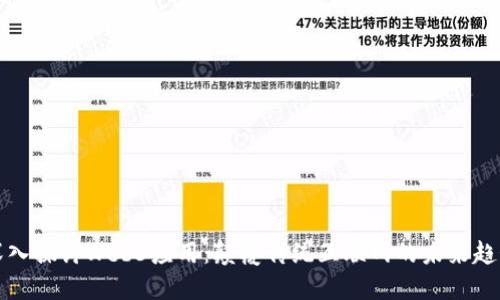...
Web3是指第三代互联网发展的理念,旨在通过区块链和去中心化的技术,使得用户可以拥有数据的真正所有权,并在此基础上构建更加开放和公平的数字经济。与Web1(静态网站和信息展示)和Web2(社交媒体和用户生成内容)相比,Web3更加注重用户隐私、数据安全以及对用户自主性的尊重。
在Web3的世界中,用户不仅仅是内容的消费者,更是内容的创造者和拥有者。这一变革的核心是分布式账本技术(即区块链),它使得在没有信任中介的情况下,用户可以直接交互、交易和分享信息。Web3旨在通过去掉中心化的服务提供商,使得每个人都能够参与到互联网的构建中来,推动民主化和去中心化的发展。

Web3应用具有几个显著的特征:
Web3应用的种类繁多,下面列举几种主要类型:

虽然Web3充满着巨大潜力和机遇,但也面临着种种挑战:
尽管仍面临许多挑战,Web3的未来仍然值得期待。随着技术的不断进步,用户教育的普及和监管环境的不断改善,Web3将会在未来的互联网生态中占据重要位置。许多初创公司和项目已经在寻求为用户提供更好的Web3体验,将其作为未来数字经济的重要组成部分。
Web2是以用户生成内容为中心的互联网时代,用户在平台上消费内容,同时这些内容和用户数据的所有权大多归平台所有。而Web3则强调用户的数字身份和数据主权。具体来说,在Web2中,平台如Facebook和谷歌控制着用户数据,而在Web3中,用户的数据存储在去中心化网络上,用户对它们拥有绝对的所有权。Web2往往依赖广告盈利,而Web3通过代币经济和智能合约驱动经济激励,鼓励用户参与并贡献内容。
在技术实现上,Web2应用大多是建立在集中式的数据库之上,而Web3应用则基于区块链和分布式账本,为用户提供更高的安全性和透明性。此外,Web3的设计理念中,不同应用之间的互操作性大大增强,使用户可以更为自由地在不同生态系统中移动和使用服务。
Web3 applications span across numerous industries, each bringing unique solutions to existing problems. In the finance sector, decentralized finance (DeFi) is revolutionizing traditional banking, enabling peer-to-peer lending, yield farming, and more without the need for banks. Non-fungible tokens (NFTs) have transformed digital art and collectibles, providing authenticity and ownership verification. Social networks are also evolving under Web3, allowing users to own their data and gain financial rewards for their content contributions.
Other applications include decentralized identity verification, supply chain transparency through blockchain tracking, and gaming ecosystems that integrate play-to-earn models, where users can earn real value through gameplay. Overall, the versatility of Web3 applications suggests they can reach far beyond the current capabilities of the web.
Getting started with Web3 involves several steps. First, individuals should educate themselves about blockchain technology, cryptocurrencies, and the various Web3 applications available. Resources such as online courses, articles, and community forums are excellent starting points. Secondly, users can create a digital wallet to interact with Web3 platforms, enabling them to store digital assets and participate in the decentralized economy.
Next, exploring popular decentralized applications (dApps) in areas like DeFi or NFTs is advisable. Users can start small, perhaps by purchasing a small amount of cryptocurrency or experimenting with a browser extension like MetaMask. Lastly, participating in community discussions and contributing to projects can enhance users' understanding and integration into the Web3 ecosystem.
The security landscape of Web3 presents both opportunities and challenges. While the decentralized nature of Web3 applications can enhance security through distributed ledger technology, users must also take personal responsibility for their assets. One major concern is the management of private keys; if a user loses their private key, they lose access to their assets. Moreover, smart contract vulnerabilities can pose risks, as poorly coded contracts may be exploited by malicious actors.
To mitigate these risks, users should use reputable wallets, enable two-factor authentication, and ensure they interact with well-audited smart contracts. Education on phishing attacks and other relevant scams is also crucial, as malicious entities often target users new to the ecosystem.
Web3 promotes decentralization by eliminating the need for central authorities in various internet services. By leveraging blockchain technology, user interactions and transactions can occur in a peer-to-peer manner. Decentralized applications (dApps) do not rely on a single point of control, distributing power across a network of users.
Decentralization also extends to governance through DAO models, where participants collectively make decisions regarding project direction, funding, and policy changes. This structure gives users a stake in the ecosystem, fostering an environment where individual contributions are recognized, and collective decisions reflect the community's best interests. Overall, Web3 is fundamentally about reimagining trust and authority through a decentralized lens.
上述内容为Web3应用的基本介绍和深入探讨,结合了相关问题的解答,结构清晰,便于用户理解。如果有其他具体问题或需要更深入的信息,请随时告知!